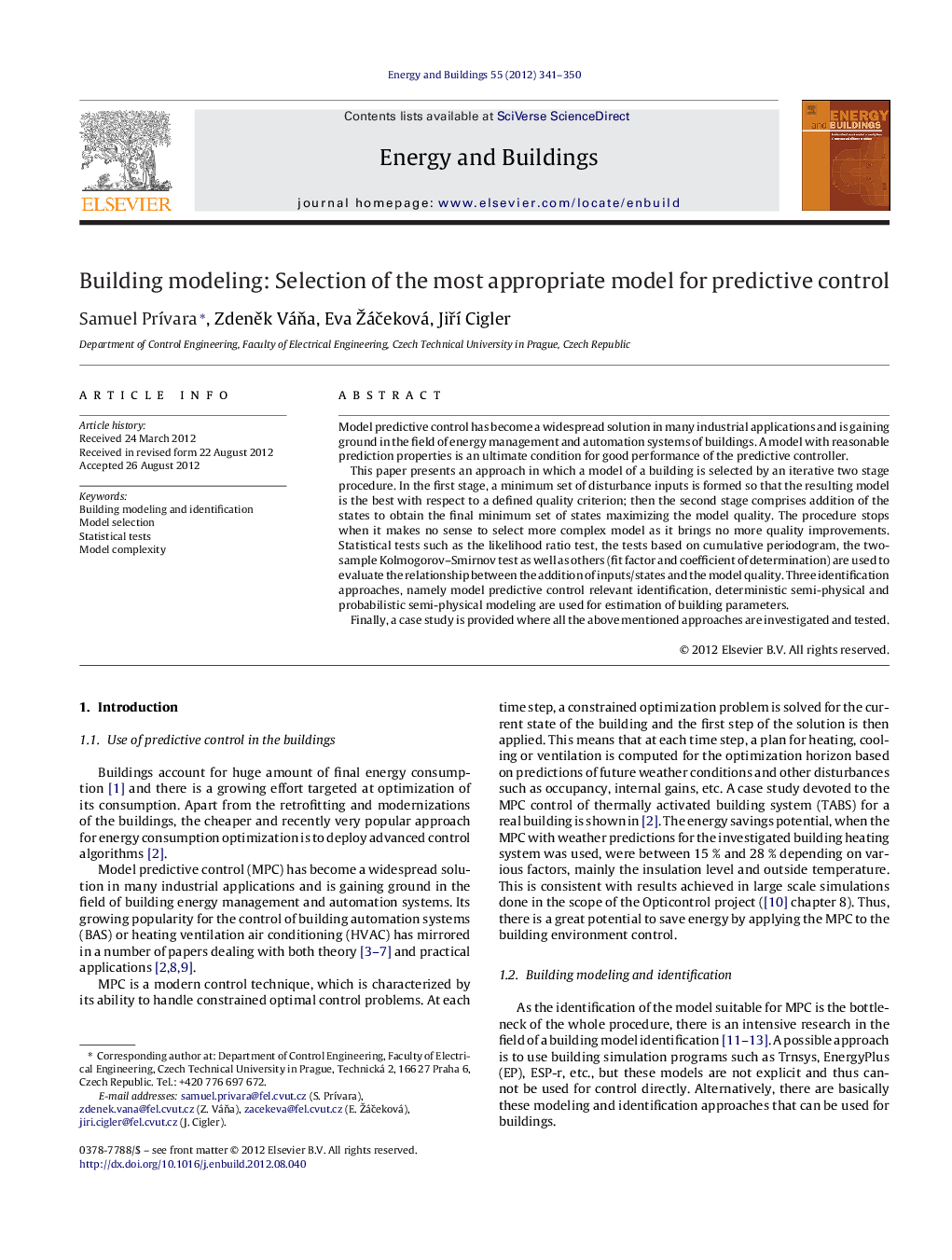| کد مقاله | کد نشریه | سال انتشار | مقاله انگلیسی | نسخه تمام متن |
|---|---|---|---|---|
| 263841 | 504085 | 2012 | 10 صفحه PDF | دانلود رایگان |

Model predictive control has become a widespread solution in many industrial applications and is gaining ground in the field of energy management and automation systems of buildings. A model with reasonable prediction properties is an ultimate condition for good performance of the predictive controller.This paper presents an approach in which a model of a building is selected by an iterative two stage procedure. In the first stage, a minimum set of disturbance inputs is formed so that the resulting model is the best with respect to a defined quality criterion; then the second stage comprises addition of the states to obtain the final minimum set of states maximizing the model quality. The procedure stops when it makes no sense to select more complex model as it brings no more quality improvements. Statistical tests such as the likelihood ratio test, the tests based on cumulative periodogram, the two-sample Kolmogorov–Smirnov test as well as others (fit factor and coefficient of determination) are used to evaluate the relationship between the addition of inputs/states and the model quality. Three identification approaches, namely model predictive control relevant identification, deterministic semi-physical and probabilistic semi-physical modeling are used for estimation of building parameters.Finally, a case study is provided where all the above mentioned approaches are investigated and tested.
► We introduced a systematic way for model complexity selection.
► The proposed algorithm is especially suitable for predictive control.
► The resulting model has the lowest possible sets of inputs and states.
► The resulting model has statistically the same quality as the full model.
► The two stage method contributes to significant economic and technical savings.
Journal: Energy and Buildings - Volume 55, December 2012, Pages 341–350